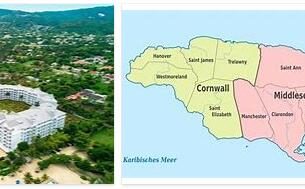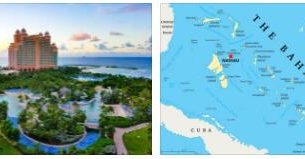History
After the landing of Christopher Columbus on the Caribbean coast of today’s Costa Rica in 1502, the Spaniards conquered the sparsely populated interior in the second half of the 16th century.
Since no precious metals were discovered, colonization progressed slowly and was limited to the agricultural development of the region. The poverty of raw materials and the lack of local workers who could have been obliged to do forced labor led to low European immigration and gave rise to predominantly small-scale agriculture, which differed greatly from the hacienda character in neighboring countries. The most important supraregional commodity was initially cocoa. The territory of today’s Costa Rica formed an independent government within the jurisdiction of the Captain General and the Audiencia of Guatemala until the end of the colonial era.
independence
After the detachment of the General Capitanate of Guatemala from motherland Spain (Declaration of Independence September 15, 1821), Costa Rica belonged to the United States of Central America from 1823–38, but announced its state sovereignty after the failure of the confederation. In 1848 the Republic of Costa Rica was proclaimed. Despite isolated liberal reforms, social conditions changed only slowly after independence until the beginning of the 20th century. The powerful families of the country rivaled for power in the state and achieved their goal partly by constitutional, partly by military means. The export economy received a boost from coffee and banana plantations and the construction of railways. While the banana plantations were almost completely US-owned, a local economic elite formed in a short period of gold and silver mining and the subsequent capital shift in coffee plantations.
Democratic order
With one exception (1917-19: military dictatorship of Frederico Tinoco Granades [* 1870, † 1931]), the president and the people’s representatives were determined in constitutional elections from 1899 to 1948. The liberal presidents Claudio González Víquez (* 1858, † 1937; President from 1906–10, 1928–32) and Ricardo Jiménez Oreamuno (* 1859, † 1945; 1910–14, 1924–) advocated democratic order and a cautious reform policy. 28, 1932-36). Economically, Costa Rica came under the spell of the USA, v. a. through branches of American banana planting companies. President Rafael Calderón Guardia (* 1900, † 1970; 1940–44) improved against the background of increased social tensions – triggered by v. a. through strikes of the workers in the banana plantations – the social situation of the lower classes through labor and social laws. His attempt to become president for the second time after a narrow election defeat in 1948 led to the civil war, in the course of which a social democratically oriented middle class led by José M. Figueres Serrer (* 1906, † 1990; 1952–58, 1970–74) gained the upper hand and restored democratic order with broad political support. Since then, those of Figueres Serrer broke up co-founded social democratic PLN and conservative party alliances in the government. Modernization in the agricultural and industrial sectors as well as improvements in social conditions have been among the most important domestic political tasks since the end of the civil war, but coping with them is made more difficult by the high level of foreign debt. In terms of foreign policy, Costa Rica sought neutrality, but the conservative President Rodrigo Carazo Odio (* 1926, † 2009; 1978-82) supported the Sandinista liberation movement in Nicaragua when the dictator Anastasio Somoza was overthrown. In the civil war that followed in Nicaragua, President Luis A. Monge (* 1925; 1982–86, PLN) a neutral stance, although the Nicaraguan Contras often operated from Costa Rican territory. President Oscar Arias Sánchez (1986–90, PLN) made significant contributions to peace in the region. In 1997, on his initiative, the Central American states signed a treaty to end the civil wars in El Salvador, Guatemala and Nicaragua (Esquipulas II Agreement). Arias Sánchez received the Nobel Peace Prize that same year.
Pre-Columbian settlements and stone balls of the Diquis (World Heritage)
The pre-Columbian stone ball settlements of the Diquis consist of four archaeological sites, located in the Diquis Delta in southern Costa Rica. They are considered unique examples of the complex social, economic, and political systems of the period between 500 and 1500 AD. Visit fashionissupreme.com for Costa Rica volcanoes beaches impressive rainforests.
Part of the facilities are artificial mounds, paved squares, graves and, above all, a collection of stone spheres with a diameter of between 70 cm and 2.57 m. Their meaning, their use and the production of these spheres are largely unexplained and puzzling. The spheres are unmistakable due to their perfection, number, size and hardness as well as their location at the original sites. From the other rampant looting of archaeological sites in Costa Rica, it was probably spared because of the thick layers of sediment that covered it.
Pre-Columbian Settlements and Stone Balls of the Diquis: Facts Hide table
| Official title: | Pre-Columbian settlements and stone balls of the Diquis |
| Cultural monument: | Four archaeological sites that represent different settlement structures of tribal principalities between 500 and 1500 AD; numerous stone balls protrude from the remains found |
| Continent: | South America |
| Country: | Costa Rica |
| Location: | Diquis Delta in southern Costa Rica |
| Appointment: | 2014 |
| Meaning: | The site provides information about the complex political, social and economic structures of pre-Columbian hierarchical societies. The extraordinary stone balls testify to their artistic and manual skills, with the researchers puzzling over the meaning as well as the production method of the balls and the tools used. |



